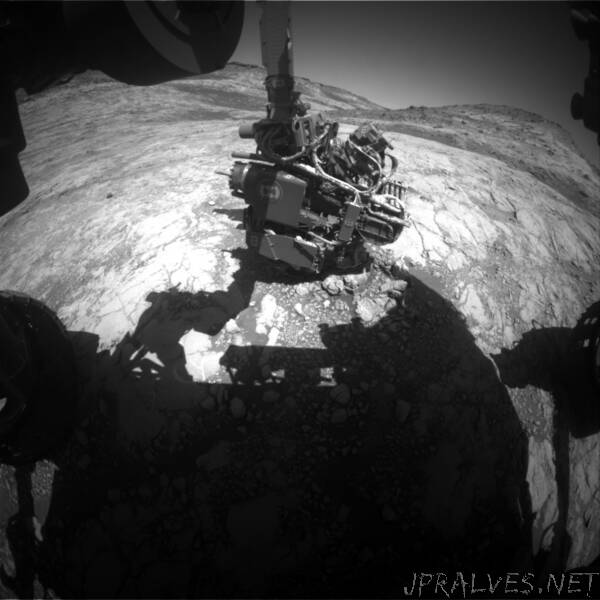
“Knowing where our bodies are helps us move through the world. We know if we are standing or sitting, if our arms are out or by our sides (or for some people, not there at all). This body awareness is essential for staying safe.
Rovers also need to know where their bodies are relative to their surroundings. Curiosity stores its body attitude in memory, things like the orientation of each joint, which instrument on the end of its arm is pointing down, and how close APXS is to the ground. It also stores its knowledge of the environment, things like how steep the slope is, where the big rocks are, and where the bedrock sticks out in a dangerous way. Curiosity evaluates this information before any motor is activated to make sure the movement can be executed safely. When the answer is no - or even maybe not - Curiosity stops without turning the motor. This conservative approach helps keep Curiosity from hitting its arm on rocks, driving over something dangerous, or pointing an unprotected camera at the sun. These safety checks require an accurate knowledge of the rover position within its environment and are an essential part of good engineering practice. They have kept Curiosity safe over the years.
Partway through its last set of activities, Curiosity lost its orientation. Some knowledge of its attitude was not quite right, so it couldn’t make the essential safety evaluation. Thus, Curiosity stopped moving, freezing in place until its knowledge of its orientation can be recovered. Curiosity kept sending us information, so we know what happened and can develop a recovery plan. That is exactly what we did today: The engineers on the team built a plan to inform Curiosity of its attitude and to confirm what happened. We want Curiosity to recover its ability to make its safety checks, and we also want to know if there is anything we can do to prevent a similar problem in the future. This approach helps keep our rover safe.”
